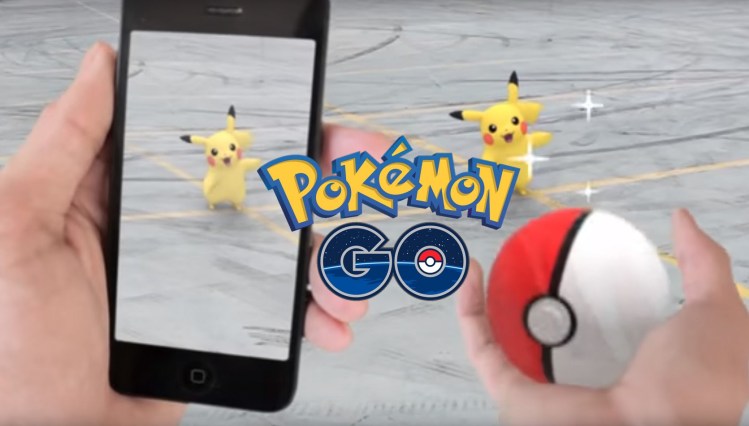By now you’ve certainly heard of Pokémon Go, and you’ve seen the crowds of people walking around, noses in their phones, excitedly chasing Pikachus and Charmanders across the countryside. Did you know that businesses are profiting from it?
Sure, the Pokémon Company itself — a subsidiary of Nintendo — is making money hand over fist from their AR game, but they aren’t the only ones getting in on the action. To understand how, you need to understand a fundamental part of the Pokémon Go gameplay.
The game centers around a real world map with various locations marked as PokeStops. These locations can be local landmarks, art installations, churches, murals, and some businesses. Not every business has a stop, and there’s currently no way to add or remove them, so it’s luck of the draw what businesses are able to take advantage of the game.
When you play the game, you can see PokéStops on the map from some distance away. However, for the low cost of about $2 an hour, players can purchase lure modules to install in a stop. These modules last for 30 minutes at a time and turn the stop into a beacon. This beacon attracts both players and Pokémon to the area, as well as making it light up on the map.
That’s where clever businesses come in. For those businesses lucky enough to be within the range of a PokéStop, or to have one for their business itself, it’s a simple matter to pay a few bucks, stack up modules for the day, and draw in customers from around the area. There are countless examples of businesses already doing so, and profiting for it.
- L’inizio Pizza Bar in Manhattan have created Pokémon-themed pizzas to go along with their stop. A $10 investment in lure modules led to a 30 percent increase in food and drink sales throughout the weekend. Talk about return on investment!
- An indie clothing store has lured people inside with a visible sign and catchy art.
- Kaleidoscope Café in Lawrenceville, Pennsylvania noticed the increase in foot traffic and started offering a 10 percent discount to anyone who showed off their app.
- Best Buy phone outlets are getting in on the craze by promoting more powerful phones for those struggling to run the app.
- The Dallas Arboretum and Botanical Garden — as well as many other museum and art gallery locations — recognizes that its grounds happens to be full of PokéStops and is encouraging trainers to stop in to take advantage. Reportedly over 60 percent of their visitors one day were playing the game.
- It’s A Grind in California was playing it with a more aggressive stance, offering a fresh lure on their stop for every 15 paid drinks purchased.
There are many, many more examples to boot. Any business with the capability to take advantage of the 7.5 million plus players of Pokémon Go is surely striving to do so by now.
Of course, you don’t have to be a small business to take advantage of the foot traffic. Kids across the country are setting up lures and lemonade stands near their houses. An animal shelter in Indiana is encouraging volunteering by promoting with Go, asking that Pokémon trainers come and take their dogs for walks while they go out searching.
Then you have even more enterprising young people. One interesting problem that has come up with Pokémon Go is that people are out and about, a lot, and they aren’t always paying attention to their surroundings, despite the warning in the app. In order to help prevent late night accidents, one clever 7-year-old created Pokéball-shaped reflector badges for trainers to wear. It’s a great niche that could explode in popularity, and even make the kid a lot of money, so long as he can mock up a design that doesn’t infringe on any copyrights.
There are plenty of local businesses out there feeling the lack, however. As of now, there is no way to apply to have a PokéStop at your location, and Niantic — developer of Pokémon Go — hasn’t released a statement about it yet. The company has said there will be an answer forthcoming, though, at least in response to inquiries from Forbes.
There are almost as many ways to take advantage of Pokémon Go as there are businesses. Offering free samples, free water, free toys. Giving discounts to players, discounts to people who purchase lures for the business, or discounts to players in specific teams. Even just promoting the game gets people in and active. If you want to dig into serious marketing through Pokémon Go, you certainly can.
Regardless of how you do it, now is certainly the time to invest in a little bit of Pokémarketing. The start of a trend is always the best time to capitalize on it, before it becomes passé for everyone to be doing it. Once lures are no longer special, they won’t be as attractive, and once the player-base begins to drop off, the returns on investment will slow. For now, though, the sky is the limit.
James Parsons is an entrepreneur, marketer, web designer, growth hacker and Apple fanboy. When he’s not writing at his blog, he’s working on his next big project.
VentureBeat's mission is to be a digital town square for technical decision-makers to gain knowledge about transformative enterprise technology and transact. Learn More

